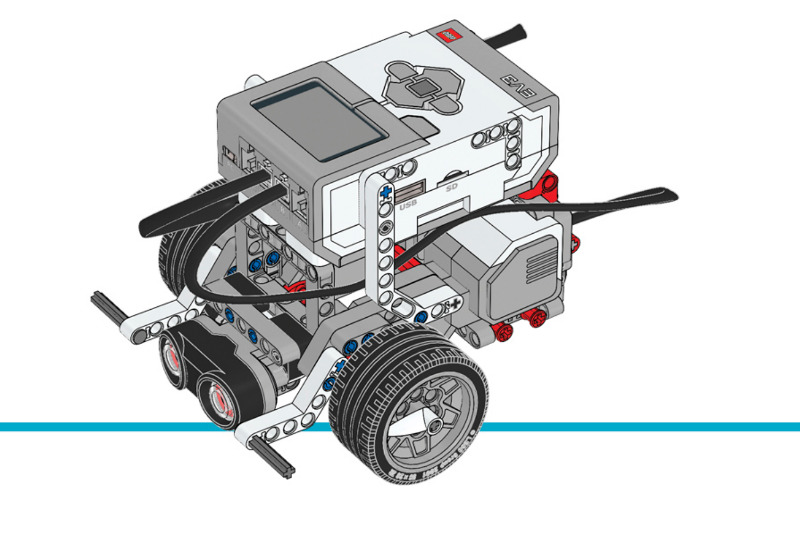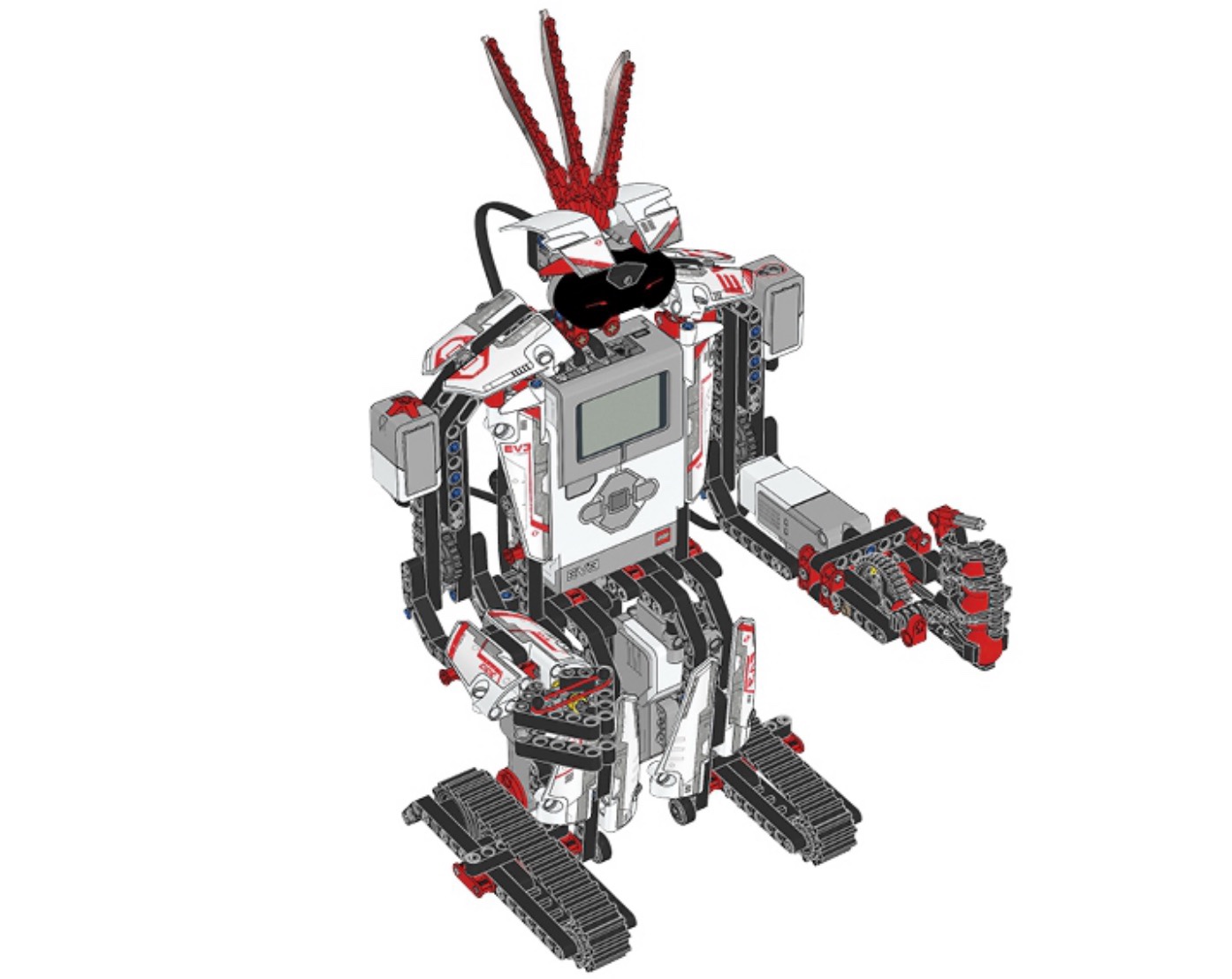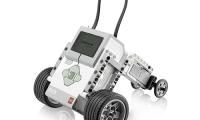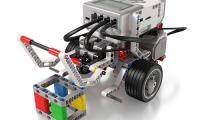避障
此示例项目展示了如何让机器人车辆响应其 使用传感器的环境。机器人以给定的 速度,直到它检测到障碍物,使用 超声波传感器 。然后机器人倒车,转身,继续行驶,直到检测到新的障碍物。
拼搭说明
可在本站查找 Educator Bot 的所有构建说明。

图 24 带有超声波传感器的机器人教育器
示例程序
#!/usr/bin/env pybricks-micropython
"""
Example LEGO® MINDSTORMS® EV3 Robot Educator Ultrasonic Sensor Driving Base Program
-----------------------------------------------------------------------------------
This program requires LEGO® EV3 MicroPython v2.0.
Download: https://education.lego.com/en-us/support/mindstorms-ev3/python-for-ev3
Building instructions can be found at:
https://education.lego.com/en-us/support/mindstorms-ev3/building-instructions#robot
"""
from pybricks.hubs import EV3Brick
from pybricks.ev3devices import Motor, UltrasonicSensor
from pybricks.parameters import Port
from pybricks.tools import wait
from pybricks.robotics import DriveBase
# Initialize the EV3 Brick.
ev3 = EV3Brick()
# Initialize the Ultrasonic Sensor. It is used to detect
# obstacles as the robot drives around.
obstacle_sensor = UltrasonicSensor(Port.S4)
# Initialize two motors with default settings on Port B and Port C.
# These will be the left and right motors of the drive base.
left_motor = Motor(Port.B)
right_motor = Motor(Port.C)
# The DriveBase is composed of two motors, with a wheel on each motor.
# The wheel_diameter and axle_track values are used to make the motors
# move at the correct speed when you give a motor command.
# The axle track is the distance between the points where the wheels
# touch the ground.
robot = DriveBase(left_motor, right_motor, wheel_diameter=55.5, axle_track=104)
# Play a sound to tell us when we are ready to start moving
ev3.speaker.beep()
# The following loop makes the robot drive forward until it detects an
# obstacle. Then it backs up and turns around. It keeps on doing this
# until you stop the program.
while True:
# Begin driving forward at 200 millimeters per second.
robot.drive(200, 0)
# Wait until an obstacle is detected. This is done by repeatedly
# doing nothing (waiting for 10 milliseconds) while the measured
# distance is still greater than 300 mm.
while obstacle_sensor.distance() > 300:
wait(10)
# Drive backward for 300 millimeters.
robot.straight(-300)
# Turn around by 120 degrees
robot.turn(120) EV3机器人
EV3机器人

